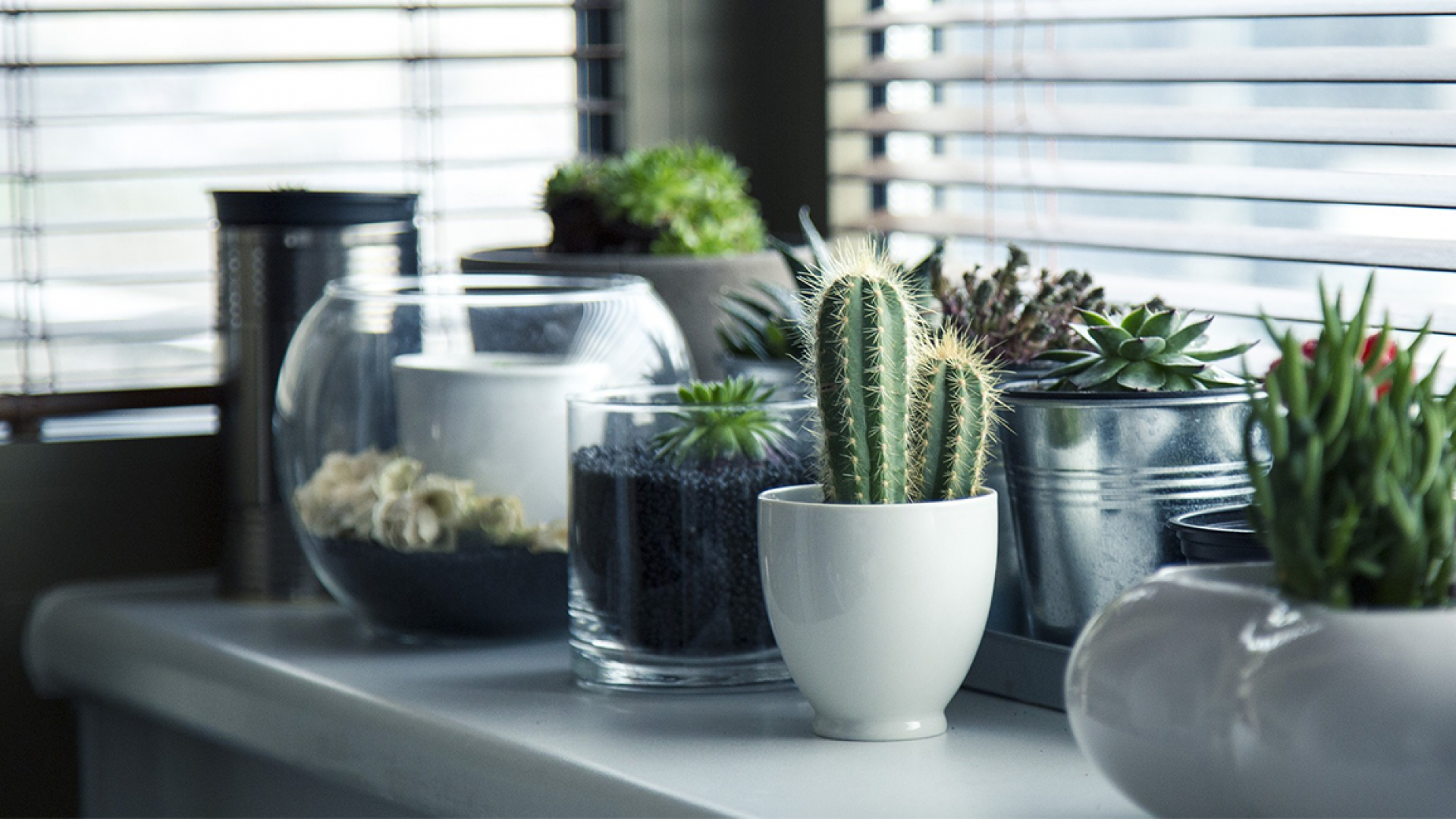If you’ve ever been accused of lacking a green thumb, you no doubt know the struggles presented by trying to grow a successful garden. An indoor garden can be a tricky endeavor to navigate; mother nature won’t be there to fill in the gaps when you forget to water your plants.
Therefore, it’s important to work smarter, not harder, to turn your weakness into a gardening success. Growing a low maintenance indoor garden doesn’t have to be challenging, and by incorporating a few easy-to-implement steps, you can cultivate a garden for even the worst – or laziest – gardeners among us.
1. Choose the right plants
When it comes down to it, some plants are just hard to grow. You might think that native plants would be ideal for indoor gardening, when in fact that’s why they’re low maintenance to begin with because they are susceptible to the climate zone. Native plants, however, don’t do too well indoors as they require your climate zones humidity and other factors. Try to avoid these when you are selecting your plants, and only choose those that are designed for being grown indoors in containers. Your plants won’t grow well if you can’t provide an environment that is compatible with their needs.
If you’re considering growing an edible garden, some good choices include lettuce, spinach, carrots, and herbs. Oftentimes, low maintenance native plants in your area can flourish as well indoor, depending on sunlight and humidity requirements. The best flowers include marigolds, begonia, succulents, and lilies.These plants all germinate rapidly, and besides watering here and there, require no other maintenance.
Before you buy your seeds and prepare to plant, you need to first decide on the best kind of garden to grow. Hydroponic gardens are great for producing large amounts of vegetables in small amounts of space, but these are advanced and require a bit more start-up energy than traditional container gardens. Container gardens are a great option for beginners as they can easily be moved if necessary.
2. Pick the most convenient spot
This will require some give and take though because you must consider your plants’ needs as well. Most plants need at least six hours of sunlight a day, but this doesn’t always mean they need direct sun. Be sure to read the labels of your plants carefully so that you are aware of the best spot.
That being said, don’t stress too much. If your chosen location- which could very well be the only available spot in your home- only receives five hours of sunlight a day, it’s not worth rearranging your entire home. Instead, work with the space you have. Consider hanging or raising plants to help make up for what your chosen location might lack. Installing grow lights can also help you make up for a scarcity of sunlight while also taking the guesswork out of whether your plants are receiving the right amount sunlight.
When all is said and done, put your plants in the most attractive and convenient spot possible. Consider placing them on a stand that is central to the rest of your home – that is, somewhere you will be forced to walk by your plants every day. This will take forgetfulness entirely out of the equation.
3.Use the right size pots
Remember that you don’t need to rush to the nursery to purchase store-bought containers, either. To make your life easier, repot your plants in containers like produce boxes, window boxes, mason jars, or wooden crates. As long as your container has plenty of drainage and room for your plants’ roots to spread, your bases are covered.
If your container is lacking drainage, simply use a knife to poke a few holes in the bottom. Another item to consider is the material of your planters. Resin or fiberglass help hold moisture longer, an advantage if you are forgetful about when to water.
4. Water intelligently
A mistake many gardeners make – that often leads to the unfortunate demise of their plants – is thinking they need to water their plants every day. Because your indoor plants are not exposed to the drying wind and scorching sun of the outdoors, they need far less water than you might think. Even moisture-loving plants are frequently drowned by overzealous indoor gardeners.
Instead, only water twice a week. When you water, instead of providing a light spritz of liquid, douse them thoroughly. The water should penetrate all the way to the bottom of the container, and not just rest on the surface of the soil. If you frequently forget to water, consider installing a drip system or a watering mat.
5. Put your plants on top of saucers to prevent a muddy mess
If part of your gardening struggles consist of the need to clean up the countertop after every time you water, fret no more. Simply place a plastic lid, saucer, or tote top underneath your plants. When you water, it will pool there instead. You can simply slide the saucer out and pour the excess water into the sink.
6. Invest in the proper tools
A little bit of work at the store now can save you a lot of work later on. Buy a good hand fork to allow you to break up the soil before planting, and an indoor watering can to make hydrating your plants a little bit easier.
You can even purchase nifty gadgets like self-watering pots, which give potted plants as much water as they need without over- or under- watering them. Moisture sensor meters are another great way to keep on top of your plants’ watering needs, as are advanced WiFi gardening sensors that tell you whether your plants are receiving enough sunlight.
Emma Bishop is a lifestyle and design writer, and mother of two beautiful girls. She is a social butterfly and loves to entertain guests at home with beautifully decorated spaces for any occasion.



